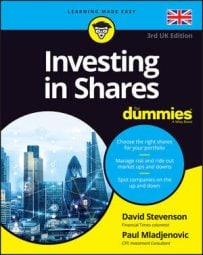In advance of the release of a big economic report, you can set up a straddle. This strategy is simple to execute and the financial move can be quite profitable.
When you set up a straddle, it means that you buy both a call, which gives you an opportunity to profit if the market rises, and a put, which gives you an opportunity to profit if the market falls, on the front contract.
The front contract is the most active and frequently quoted futures contract at any given moment. After establishing the straddle, you then can sell the option (put or call) that's on the wrong side of the report.
The market will respond when it’s surprised by announcements within an economic report. When the report is released and the market responds, you can participate in the move with a defined amount of risk, based on the way you set up your straddle — compared to what you can lose if you played the futures markets directly or you owned individual stocks that responded to the report.
For example, if the market decides that a higher-than-expected consumer price index was not necessarily inflationary, bond prices may actually rise and interest rates would fall.
Looking at two scenarios, you can compare what would happen if you owned a short position on T-note futures or a straddle on T-note futures.
If you had the short position in T-note futures, you would be betting that T-note futures prices will fall in response to the economic report. In this case, however, the bond market actually goes up. That means that you will lose money because you own a short position.
If, on the other hand, you set up a straddle, you’d be in a better position, because a straddle has two components:
A call that lets you profit when the underlying asset goes up in price.
A put that lets you profit when the underlying asset goes down in price.
All you have to do is wait for the report and the market’s response. In the example, the correct response would be to sell the put and hold on to the call.

